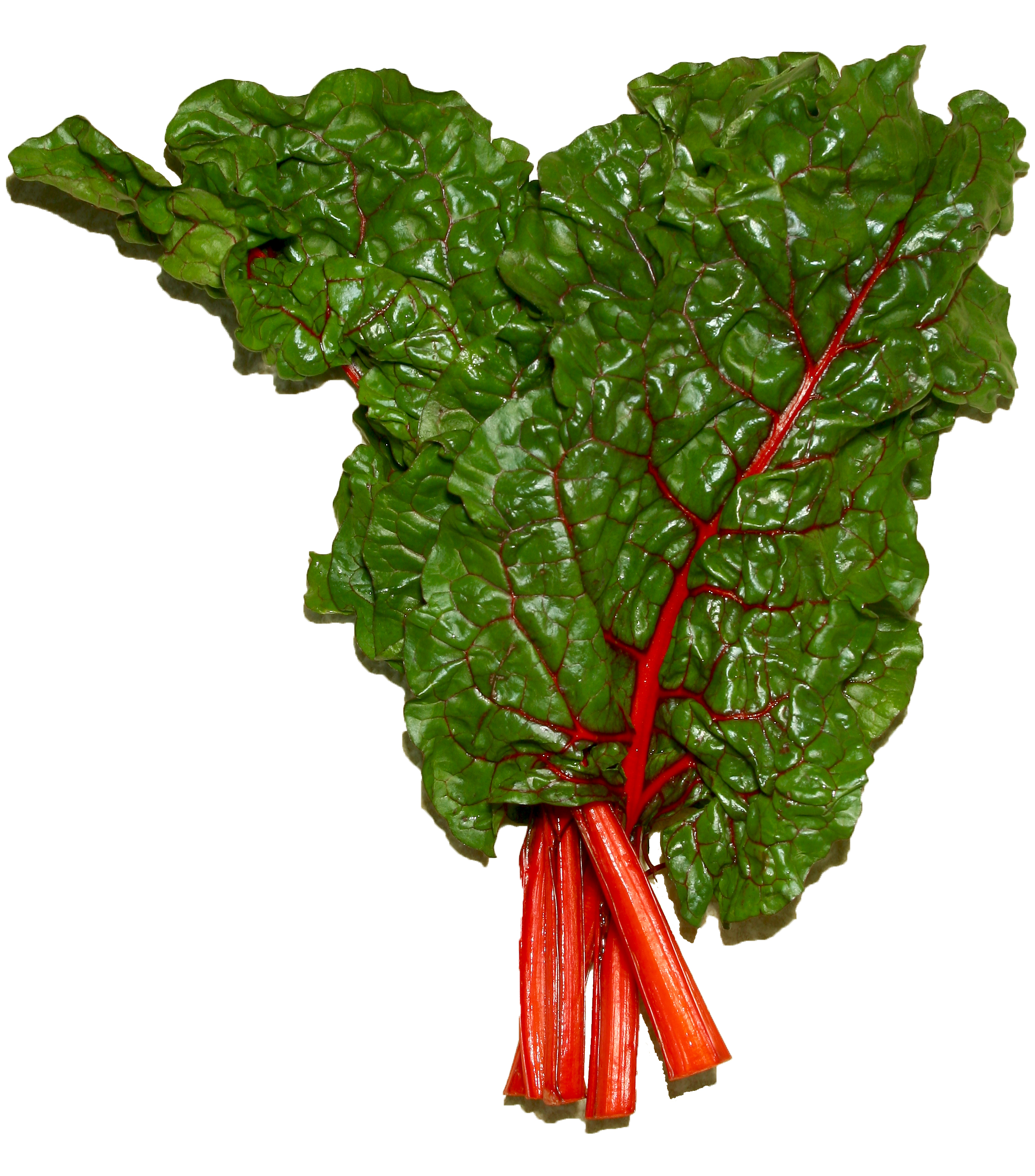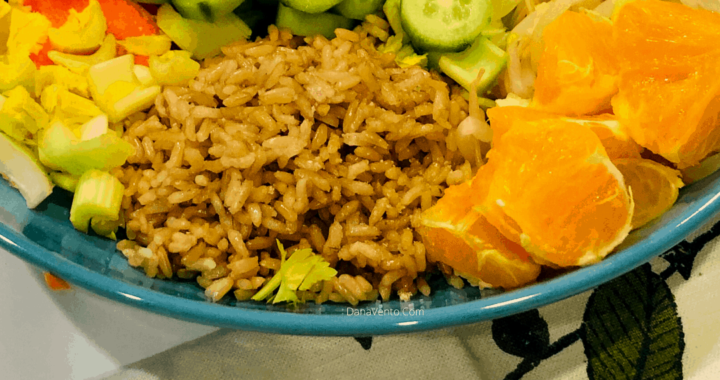Swiss chard
10 min read
What’s New and Beneficial About Swiss Chard
- We’ve become accustomed to thinking about vegetables as great sources of phytonutrients. Indeed they are! But we don’t always appreciate how unique each vegetable can be in terms of its phytonutrient content. Recent research has shown that chard leaves contain at least 13 different polyphenol antioxidants, including kaempferol, the cardioprotective flavonoid that’s also found in broccoli, kale, strawberries, and other foods. But alongside of kaempferol, one of the primary flavonoids found in the leaves of chard is a flavonoid called syringic acid. Syringic acid has received special attention in recent research due to its blood sugar regulating properties. This flavonoid has been shown to inhibit activity of an enzyme called alpha-glucosidase. When this enzyme gets inhibited, fewer carbs are broken down into simple sugars and blood sugar is able to stay more steady. It makes sense to think about chard as a vegetable whose flavonoid phytonutrients are unique and may offer special benefits for blood sugar control.
- Like beets, chard is a unique source of phytonutrients called betalains. In the betalain family are found reddish-purple betacyanin pigments as well as yellowish betaxanthin pigments. Both types can be found in chard! In the reddish-purple stems of chard and the reddish-purple veins in the leaves, scientists have identified at least 9 betacyanin pigments, including betanin, isobetanin, betanidin, and isobetanidin. In the yellowish stems and veins, at least 19 betaxanthin pigments have been identified, including histamine-betaxanthin, alanine-betaxanthin, tyramine-betaxanthin, and 3-methoxytyramine-betaxanthin. Many of the betalain pigments in chard have been shown to provide antioxidant, anti-inflammatory, and detoxification support. The detox support provided by betalains includes support of some especially important Phase 2 detox steps involving glutathione. So you can see that in the case of chard, beauty is far from just skin deep!
WHFoods Recommendations
Swiss chard is not only one of the most popular vegetables along the Mediterranean but it is one of the most nutritious vegetables around and ranks second only to spinach following our analysis of the total nutrient-richness of the World’s Healthiest vegetables. It is also one of only three vegetables that we recommend boiling to help reduce its concentration of oxalic acid. Slice leaves 1-inch wide and the stems 1/2-inch wide and boil for just 3 minutes. We only recommend eating the stems of varieties with white stems; colored stems are very tough. For more on the Healthiest Way of Cooking Swiss Chard, see the How to Enjoy section below.
Foods belonging to the chenopod family—including beets, chard, spinach, and quinoa—continue to show an increasing number of health benefits not readily available from other food families. The red and yellow betalain pigments found in this food family, their unique epoxyxanthophyll carotenoids, and the special connection between their overall phytonutrients and our nervous system health (including our specialized nervous system organs like the eye) point to the chenopod family of foods as unique in their health value. While we have yet to see large-scale human studies that point to a recommended minimum intake level for foods from this botanical family, we have seen data on chenopod phytonutrients, and based on this data, we recommend that you include foods from the chenopod family in your diet 1-2 times per week. In the case of a leafy food like Swiss chard, we recommend a serving size of at least 1/2 cup, and even more beneficial, at least one full cup.
1.00 cup
(175.00 grams)
GI: very low
This chart graphically details the %DV that a serving of Swiss chard provides for each of the nutrients of which it is a good, very good, or excellent source according to our Food Rating System. Additional information about the amount of these nutrients provided by Swiss chard can be found in the Food Rating System Chart. A link that takes you to the In-Depth Nutritional Profile for Swiss chard, featuring information over 80 nutrients, can be found under the Food Rating System Chart.
- Health Benefits
- Description
- History
- How to Select and Store
- Tips for Preparing and Cooking
- How to Enjoy
- Individual Concerns
- Nutritional Profile
- References
Health Benefits
Although chard has not been studied as extensively as other chenopod vegetables (like beets and spinach), there’s no question about the valuable role that chard can play in support of our health, or about its routine inclusion in healthy diets worldwide. The amazing variety of phytonutrients in chard is quickly recognizable in its vibrant colors, including the rich, dark greens in its leaves and the rainbow of reds, purples, and yellows in its stalks and veins. Virtually all of these phytonutrients provide antioxidant benefits, anti-inflammatory benefits, or both. In addition, many provide health benefits that are more specific and of special important to particular body systems. Best researched in this area are phytonutrient benefits provided by chard for our body’s blood sugar-regulating system.
Blood Sugar Benefits
Multiple studies on animals have shown that chard has unique benefits for blood sugar regulation. In addition, chard may provide special benefits in the diets of individuals diagnosed with diabetes. Although large-scale human studies have yet to be conducted in this area, lab studies and animal studies show that syringic acid—one of chard’s premiere flavonoids—has the ability to inhibit activity of an enzyme called alpha-glucosidase. Alpha-glucosidase is an enzyme used to break down carbohydrates into simple sugars. When this enzyme gets inhibited, fewer carbs get broken down and blood sugar is able to stay more steady. This blood sugar-steadying process seems to be particularly true following a meal. In addition to its syringic acid, chard contains a very good amount of fiber (over 3.5 grams per cooked cup) and a very good amount of protein (once again, nearly 3.5 grams per cooked cup). Fiber and protein-rich foods are an excellent way to help stabilize blood sugar levels, since they help regulate the speed of digestion and keep food moving at the right pace through our digestive tract.
Also unique among the health benefits from this chenopod vegetable has been its ability to help pancreatic cells regenerate. At this point research on the beta cells of the pancreas has been restricted to animal studies, and instead of food-form chard, extracts from this plant have been used to evaluate potential benefits for the pancreas. Even though it’s impossible to generalize from laboratory animals fed chard extracts to humans eating fresh chard, it’s encouraging to see chard extracts providing this support to pancreatic beta cells. These cells, after all, are the cells responsible for production of insulin, and it’s impossible for our blood sugar to be optimally regulated without the help of insulin. Expect to see follow-up research on the health benefits of chard for humans in this very important area of blood sugar regulation.
Although researchers aren’t certain as to the exact nutrients involved, repeated studies on animals have also shown the ability of chard extracts to help protect the liver from damage in the case of animals with experimentally induced diabetes. Because liver protection can be an important goal in the management of diabetes in humans, this ability of chard to help protect the liver may be one additional reason why intake of this vegetable should be thought of as providing special benefits for blood sugar regulation and perhaps for dietary management of diabetes as well.
Antioxidant and Anti-Inflammatory Benefits
As an excellent source of vitamin C, vitamin E, vitamin A (in the form of beta-carotene) and the mineral manganese, and a good source of the mineral zinc, Swiss chard offers an outstanding variety of conventional antioxidants. But these conventional antioxidants are only part of chard’s fantastic health benefits with respect to prevention of oxidative stress and diseases related to chronic, unwanted oxidative stress. Equally outstanding are chard’s phytonutrient antioxidants. These phytonutrient antioxidants range from carotenoids like beta-carotene, lutein, and zeaxanthin to flavonoids like quercetin and kaempferol. But the range of phytonutrients in chard is even more extensive than researchers initially suspected, and at this point in time, about three dozen antioxidant phytonutrients have been identified in chard, including betalains (both betacyanins and betaxanthins) and epoxyxanthophylls. Many of these antioxidant phytonutrients provide chard with its colorful stems, stalks, and leaf veins.
As a rule, the phytonutrient antioxidants in chard also act as anti-inflammatory agents. Sometimes they lower risk of chronic, unwanted inflammation by altering the activity of pro-inflammatory enzymes. At other times, they help prevent the production of pro-inflammatory messaging molecules. Because chronic low level inflammation (especially when coupled with excessive oxidative stress) has repeatedly been shown to increase our risk of obesity, atherosclerosis, type 2 diabetes, high blood pressure, and several forms of arthritis, chard is very likely to show up in future studies on humans as a key vegetable for lowering risk of these health problems.
Support of Bone Health
With its very good supply of calcium and its excellent supply of magnesium and vitamin K, chard provides standout bone support.
Although many people have already learned about the connection between minerals like calcium and health of bones, the role of vitamin K in support of bone has not received nearly as much media attention. Vitamin K1 helps prevent excessive activation of osteoclasts, the cells that break down bone. Additionally, friendly bacteria in our intestines convert vitamin K1 into vitamin K2, which activates osteocalcin, the major non-collagen protein in bone. Osteocalcin anchors calcium molecules inside of the bone. All of these vitamin K-related mechanisms point to the importance of vitamin K-rich foods for bone health.
Description
Chard is a tall leafy green vegetable commonly referred to as Swiss chard and scientifically known as Beta vulgaris. Chard belongs to the same family as beets and spinach and shares a similar taste profile with a flavor that is bitter, pungent, and slightly salty. Swiss chard is truly one of the vegetable valedictorians with its exceptionally impressive list of health-promoting nutrients. Although Swiss chard is available throughout the year, its peak season runs from June through August when it is at its best and in the greatest abundance at your local supermarket.
Swiss chard—along with kale, mustard greens and collard greens—is one of several leafy green vegetables often referred to as “greens”. It is a tall leafy green vegetable with a thick, crunchy stalk that comes in white, red or yellow with wide fan-like green leaves.
Chard has a thick, crunchy stalk to which fan-like wide green leaves are attached. The leaves may either be smooth or curly, depending upon the variety, and feature lighter-colored ribs running throughout. The stalk, which can measure almost two feet in length, comes in a variety of colors including white, red, yellow and orange. Sometimes, in the market, different colored varieties will be bunched together and labeled “rainbow chard.”
History
Swiss chard isn’t native to Switzerland. Its actual homeland of chard lies further south, in the Mediterranean region; in fact, the Greek philosopher, Aristotle wrote about chard in the fourth century B.C. This is not surprising given the fact that the ancient Greeks, and later the Romans, honored chard for its medicinal properties. Chard got its common name from another Mediterranean vegetable, cardoon, a celery-like plant with thick stalks that resemble those of chard. The French got the two confused and called them both “carde.”
How to Select and Store
Choose chard that is held in a chilled display as this will help to ensure that it has a crunchier texture and sweeter taste. Look for leaves that are vivid green in color and that do not display any browning or yellowing. The leaves should not be wilted nor should they have tiny holes. The stalks should look crisp and be unblemished.
Do not wash Swiss chard before storing as the exposure to water encourages spoilage. Place chard in a plastic storage bag and wrap the bag tightly around the chard, squeezing out as much of the air from the bag as possible. Place in refrigerator where it will keep fresh for up to 5 days. If you have large batches of chard, you can blanch the leaves and then freeze them.
Tips for Preparing and Cooking
Tips for Preparing Swiss Chard
Rinse Swiss chard under cold running water. Do not soak chard as this will result in the loss of water-soluble nutrients to the water. Remove any area of the leaves that may be brown, slimy, or have holes.
Stack the leaves and slice into 1-inch slices until you reach the stems. Only the white stems of the Fordhook variety of chard are tender enough to eat. Cut stems into 1/2-inch slices discarding the bottom 1 inch portion. We don’t recommend cooking the stems of the varieties with colored stems.
The Healthiest Way of Cooking Swiss Chard
Swiss chard is only one of three vegetables we recommend boiling to free up acids and allowing them to leach into the boiling water; this brings out a sweeter taste from the chard. Discard the boiling water after cooking; do not drink it or use it for stock because of its acid content.
Use a large pot (3 quart) with lots of water and bring to a rapid boil. Add chard to the boiling water. If stems are more than 1-inch wide, cook them for 2 minutes before adding the leaves. If less than 1 inch in width you can boil the leaves and stems together for 3 minutes. Begin timing as soon as you place the chard in the pot if you are using 1 pound or less of chard. If you are cooking large quantities of chard bring the water back to a boil before beginning timing the 3 minutes. Do not cover the pot when cooking chard. Leaving the pot uncovered helps to release more of the acids with the rising steam.
While we have not seen research on cooking, Swiss chard, and oxalates, there is some research on this topic with another chenopod family vegetable, spinach. Research has shown that the boiling of spinach in large amounts of water helps decrease the oxalic acid content by as much as




